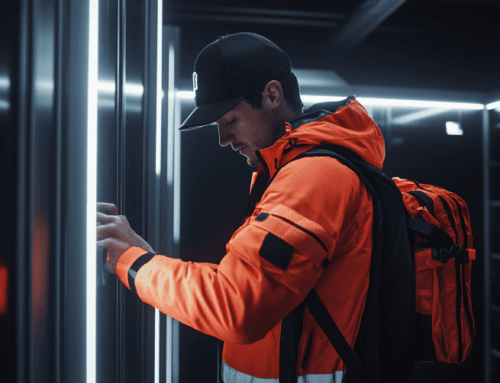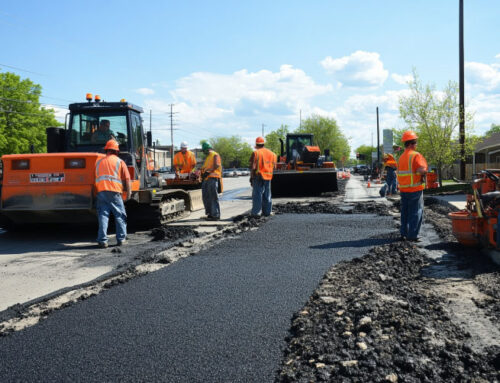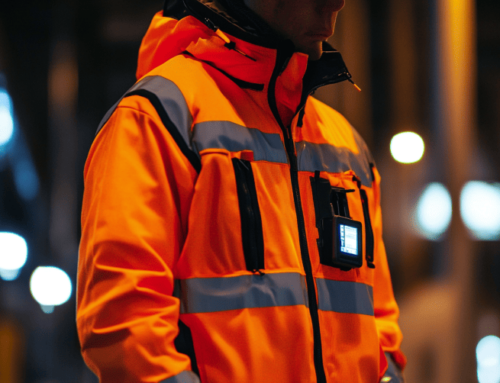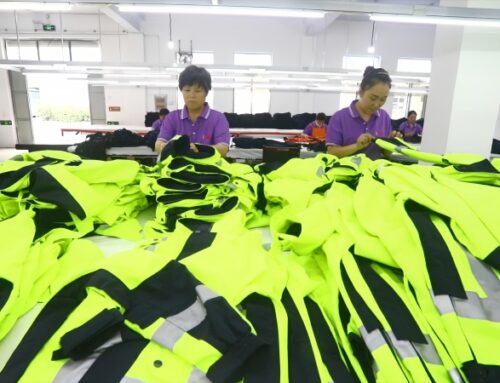1. Understanding High-Visibility Standards
ANSI/ISEA 107-2020 Overview: High-visibility safety apparel is classified into three performance classes under the ANSI/ISEA 107-2020 standard. An ANSI Class 3 hi vis jacket represents the highest protection level, requiring the most fluorescent background material and reflective striping of all classes.
By contrast, standard hi-vis gear (Class 1 or Class 2 vests and jackets) contains less coverage and is intended for lower-risk environments. Class 3 gear is engineered for maximum conspicuity in the most dangerous conditions.
Class 3 vs Lower Classes:
- Class 1 offers basic visibility for workers far from traffic.
- Class 2 increases reflective area for moderate-risk sites like road shoulders.
- Class 3 delivers full-body visibility with high-intensity colors and extensive reflective tape on sleeves or legs.
A simple vest alone cannot meet Class 3 requirements because the standard mandates coverage on arms or legs for 360° visibility. Class 3 hi-vis jackets are thus required in high-speed traffic areas, at night, and in other high-risk scenarios where every bit of visibility counts.
2. High-Risk Scenarios for Class 3 Gear
2.1 When Class 3 is Required
In high-speed or low-visibility conditions—such as highways with speeds over 50 mph—an ANSI Class 3 hi vis jacket is mandatory. Highway construction crews, flaggers, and emergency responders on busy roads need Class 3 jackets to be seen from a distance. Since 2009, U.S. federal regulations have required Class 2 or Class 3 hi-vis apparel for anyone working on or near public highways.
Safety leaders often choose Class 3 over Class 2 gear to ensure maximum visibility when vehicles are fast or conditions change unpredictably.
2.2 Standard Gear for Lower Risk
Basic reflective vests (Class 1 or Class 2) may suffice in controlled environments like warehouses, parking lots, or daylight construction sites with no traffic. These garments ensure visibility around slower-moving vehicles (e.g., forklifts) or indoors.
However, when risk factors increase—night work, weather challenges, or foot traffic near trucks—the enhanced protection of an ANSI Class 3 hi vis jacket becomes indispensable. Class 3 jackets often include high-visibility sleeves and sometimes paired hi-vis pants, creating a continuous reflective silhouette. This unbroken visibility helps drivers spot workers more easily against complex backgrounds or stormy skies.

3. Performance and Safety Differences
3.1 Visibility and Coverage
An ANSI Class 3 hi vis jacket offers a greater expanse of reflective and fluorescent material, dramatically improving long-range and 360° visibility compared to standard hi-vis gear.
The full sleeves and additional reflective bands ensure workers are seen from all angles, even when moving or bending. In contrast, Class 2 vests may only guarantee visibility from the front and back. By maximizing coverage, Class 3 gear gives drivers more reaction time to avoid incidents.
3.2 Durability and Design
Many ANSI Class 3 hi vis jackets are built as high-quality workwear—insulated parkas or rain jackets—with tougher fabrics and reinforced construction. While durability isn’t mandated by ANSI, manufacturers design Class 3 gear for harsh conditions.
Features like reinforced seams, waterproof coatings, and comfortable linings add value beyond visibility. Experts recommend choosing jackets made of durable polyester or nylon with strong stitching to ensure longevity in tough worksites.
Standard hi-vis vests or shirts, however, may tear or wear out faster when exposed to rugged conditions. The superior build of a Class 3 jacket offers a longer service life and consistent reflectivity, making it more cost-effective over time.
3.3 Compliance and Safety Confidence
An ANSI Class 3 hi vis jacket simplifies compliance with safety regulations and site rules. Employers must provide appropriate high-visibility PPE, and Class 3 gear meets or exceeds requirements in nearly any situation.
Since the Federal Highway Administration’s MUTCD manual in 2009, all roadway workers must wear at least Class 2 or 3 hi-vis apparel. Class 3 jackets feature an ANSI/ISEA 107 label identifying their class and type, which makes verification by safety officers straightforward.
Using Class 3 gear not only helps avoid penalties but also instills confidence in workers, knowing their PPE is truly up to standard.
4. Use Cases Across Industries
4.1 Construction and Roadwork
On road construction sites, ANSI Class 3 hi vis jackets are standard issue for anyone near live traffic. Crews, flaggers, and surveyors rely on Class 3 gear to maximize visibility. During daytime work, supervisors might allow Class 2 vests for workers separated from traffic, but Class 3 is crucial for night paving jobs or any task adjacent to moving vehicles.
4.2 Utilities and Public Safety
Utility crews operating near traffic and emergency responders at roadside incidents benefit greatly from Class 3 hi-vis jackets. Police, firefighters, and paramedics wear them during roadside emergencies to stand out to oncoming vehicles. Although standard vests may be used for indoor or low-traffic tasks, many agencies default to Class 3 for field operations to maximize safety.
4.3 Warehousing and Logistics
In warehouse yards and outdoor loading areas, managers often upgrade staff to ANSI Class 3 hi vis jackets. Indoors, Class 1 or 2 vests suffice, but in outdoor truck yards at night, Class 3 gear ensures workers are seen among moving vehicles. Branded hi vis jackets can be made to Class 3 specs to boost both safety and team visibility. Companies sometimes adopt Class 3 jackets organization-wide, going beyond minimum standards to create a uniformly safe environment.
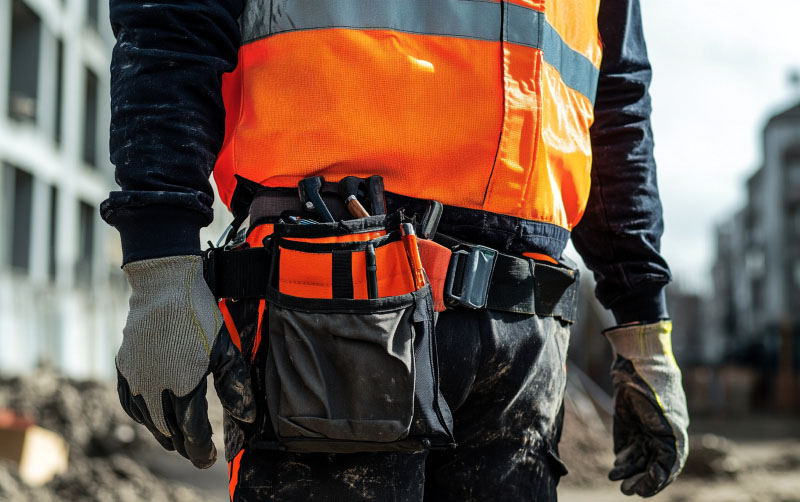
5. Sourcing and Customization Considerations
5.1 Working with OEM/ODM Manufacturers
Partnering with experienced reflective jacket manufacturers and OEM hi vis wearing suppliers is essential for procuring ANSI Class 3 hi vis jackets. A trusted OEM/ODM garment partner (like BOWINS Garment) can produce compliant Class 3 designs with custom logos or colors without compromising safety.
Such manufacturers use quality materials and proven construction techniques, ensuring each jacket maintains visibility and durability in the field. They also handle large-volume orders with consistent quality control.
5.2 Quality and Reliability Factors
When evaluating suppliers, consider these key factors:
- ISO 9001 certification for proven quality management practices.
- Provision of ANSI/ISEA 107-2020 certification information and testing data.
- Supply chain reliability and on-time delivery performance.
- Customer support for sizing, replacements, or rapid additional orders.
Choosing a qualified manufacturer ensures your team has ANSI Class 3 hi vis jackets that are effective, consistently available, and up to standard. The peace of mind from equipping every worker with certified Class 3 gear is well worth the investment.

